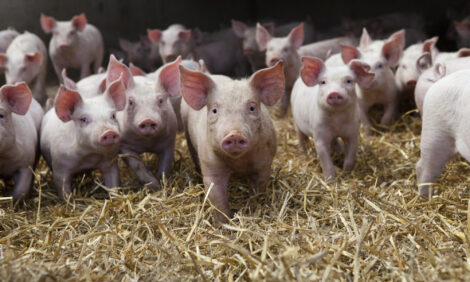



Effects of Group Housing on Sow Welfare: A Review
This new review by researchers in Australian and Denmark reveals that competition for feed is at the root of much aggressive behaviour in sows and that famliarity between sows and genetic selection can help. The paper highlights a number of areas where our knowledge on the subject is incomplete.Factors that have been shown to impact the welfare of group-housed sows are discussed in this review by P.H. Hemsworth from the University of Melbourne in Australia and co-authors there and at the University of Adelaide as well as at the University of Copenhagen and the Danish Food And Agriculture Council.
Floor space allowance markedly affects sow welfare, the researchers write in their paper in Journal of Animal Science. In addition to quantity of floor space, the quality of space is important: spatial separation between sows can be provided with visual or physical barriers and stalls. Whereas 1.4 square metres per sow is insufficient, further research is required to examine space effects in the range of 1.8 to 2.4 square metres per sow in more detail.
The period immediately after mixing has the most pronounced effects on aggression and stress, and therefore, well-designed mixing pens offer the opportunity to reduce aggression, injury, and stress while allowing the social hierarchy to quickly form.
Because hunger is likely to lead to competition for feed or access to feeding areas, strategies to reduce hunger between meals through higher feeding levels, dietary fibre or foraging substrate should be examined.
However, researchers have found that feeding systems, such as full-body feeding stalls, can also affect aggression and stress by providing protection at feeding.
Drawing conclusions on this topic is difficult because research directly comparing floor feeding, feeding stalls and electronic sow feeder systems has not been conducted.
Familiar sows engage in less aggression, so mixing sows that have been housed together in the previous gestation may reduce aggression.
Although there is evidence in other species that early experience may affect social skills later in life, there are few studies on the effects of early “socialisation” on aggressive behaviour of adult sows.
Genetic selection has the potential to reduce aggression, and therefore, continued research on the opportunity to genetically select against aggressiveness and its broader implications is required.
Hemsworth and co-authors highlight that most research to date has examined mixing sows after insemination and knowledge on grouping after weaning is limited.
Reference
Verdon M., C.F. Hansen, J-L. Rault, E. Jongman, L.U. Hansen, K. Plush and P.H. Hemsworth. 2015. Effects of group housing on sow welfare: A review. J. Anim. Sci. 93:1999-2017.
July 2015








